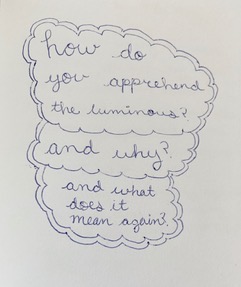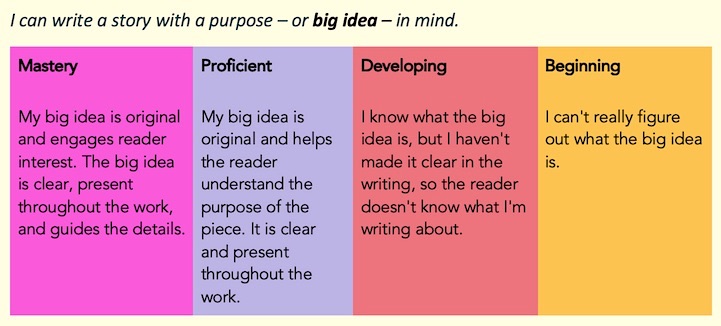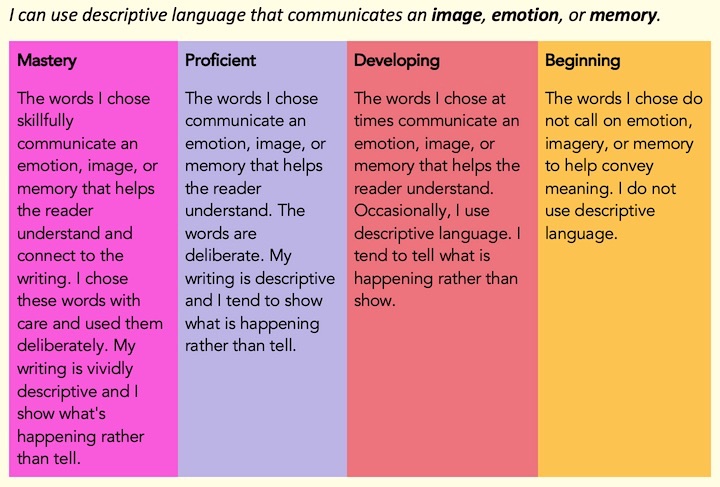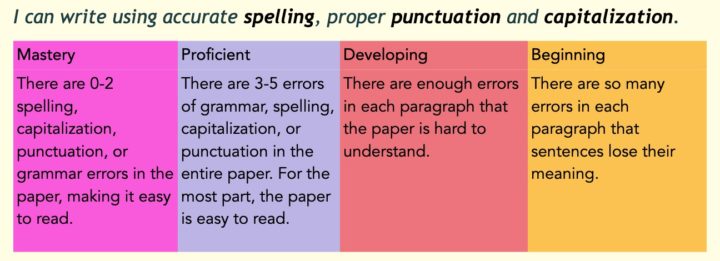Creating Rubrics That Foster Student Growth
When I first tried my hand at creating rubrics for my 8th grade English students’ papers, I had fanciful – and mistaken – ideas about what should be in a rubric.
One of my rubric categories was “apprehension of the luminous”…as in James Joyce’s beautiful line from Portrait of the Artist as a Young Man. Sadly, I’m not kidding.
That phrase has stayed with me since I first encountered it 32 years ago, and I was excited to introduce this concept to my 8th graders. I thought it was whimsical and fun, but it also somehow captured what I wanted to see in their writing: creativity and an exploration of what they found beautiful.
I came up with four descriptors and laid out the criteria. As it turned out, including “apprehension of the luminous” on the rubric not only baffled my students and my teaching partner, but it also failed to produce stronger, more idiosyncratic writing.
One of the most important functions we serve as teachers is to offer feedback that fosters growth. Obviously, asking 13-14 year olds to “apprehend the luminous” in their writing was not a great strategy for growth!
What I’ve learned about rubrics
Eventually, after many iterations and lots of student input, I figured out how to create rubrics that helped my students understand what was expected of them and evaluate their own progress in a meaningful, authentic way.
The key concept in rubric writing is clarifying its purpose. As a younger teacher, I thought of the rubric as a tool for me to grade a paper. After some professional development and deep reading about competency-based learning, I reframed the rubric’s purpose as a tool to provide feedback to the student about their progress toward mastery of a learning target.
This shift changed everything! By centering student growth, I was able to provide specific feedback that my students could understand and easily implement. It was a miracle.
Create rubrics using backwards design
My next revelation was that generating feedback that fosters growth is a project in backwards design. Here are the steps:
1. Develop clear learning targets for students, written in language they can understand. I had made the mistake of using needlessly complicated language to describe learning objectives that were, frankly, written for me as the teacher rather than for the students. For example: “Students will generate a provable, arguable thesis”.
When I switched to the student perspective (“I can write an essay or story with a purpose or big idea or in mind”) what was expected was much clearer to the student.
As mentioned, my other big mistake was over-complicating the rubric with learning targets that couldn’t be quantified and that ultimately didn’t matter. “Apprehending the luminous” still sounds pretty great to me, but now I leave it off the rubric and hope it is a joyful byproduct of “I can use vivid, descriptive language like sensory imagery or metaphors.”
2. Consider which sub-skills or knowledge support the learning target. For example, including “textual evidence” in an essay means that you also have to be able to identify what counts as textual evidence for a particular thesis. This sub-skill needs to be delineated on the rubric.
3. When writing a 4-point rubric, use the descriptor boxes to lay out the steps of skill acquisition in order. I think of a “4” as mastery of the skill and “1” as a person who’s not encountered the skill before…a novice. If one starts as a novice, what would the practice of the skill look like? What components are present and what is absent? What does the skill look like at a “2” level?
Some people find it helpful to start by describing the “4” or mastery level, and then take away components as they move down a level in each descriptor box. The goal here is that when students look at the rubric, they should see how learning progresses as they master a skill. (Click rubrics to enlarge.)
4. Check your work. Once you’ve written the rubric, give it to students and seek their feedback. Do they understand the words? Can they apply it to other kids’ work? Then, can they apply it to their own? Make adjustments based on what the students have to say about the rubric’s utility.
5. Check your work again. Use the student work that has been submitted to you to quality-check the rubric’s descriptors: have you captured all of the components that go into mastery? Did you adequately qualify the difference between a “4” and “3”? A “1” and “2”? Make adjustments.
Two tips to maximize effectiveness
Once you’ve developed a clear rubric, I have a few tips for using it effectively.
► The first tip is that you must use the language of the rubric when you offer feedback. I often made the mistake of using words like “details” and “support” and “examples” interchangeably in my comments, thinking my students followed along. Some of them did, but a few of them didn’t, which served to frustrate those kids.
When I switched to using consistent language in the rubric and the feedback, I saw an immediate improvement in all of the students’ ability to revise as expected.
► The second tip is that once students have revised, ask them to explain their process to you. Hearing the rationale about why students made the changes they did (or didn’t) is eye-opening, as it allows you to see the relationship between student understanding and application.
Thanks to these mini-conferences, I realized when my comment of “give an example here” or “this is awkwardly worded” didn’t make sense to the student. Having the opportunity to clarify and revise any misunderstandings is useful to you and to the student’s learning, which, after all, is the ultimate goal
Effective tools for growth

Also see Stephanie’s post:
Single Point Rubrics: Efficient and Impactful
Stephanie Farley has been an English teacher and independent school administrator for 27 years. Interested in instructional design, assessment, feedback, and grading, Stephanie served as a Mastery Transcript Consortium Site Director and has been on a number of California Association of Independent Schools accreditation committees. She has created professional development for schools around reading and curriculum and coaches teachers in instruction, lesson planning, feedback, and assessment. Visit her website Joyful Learning.






































